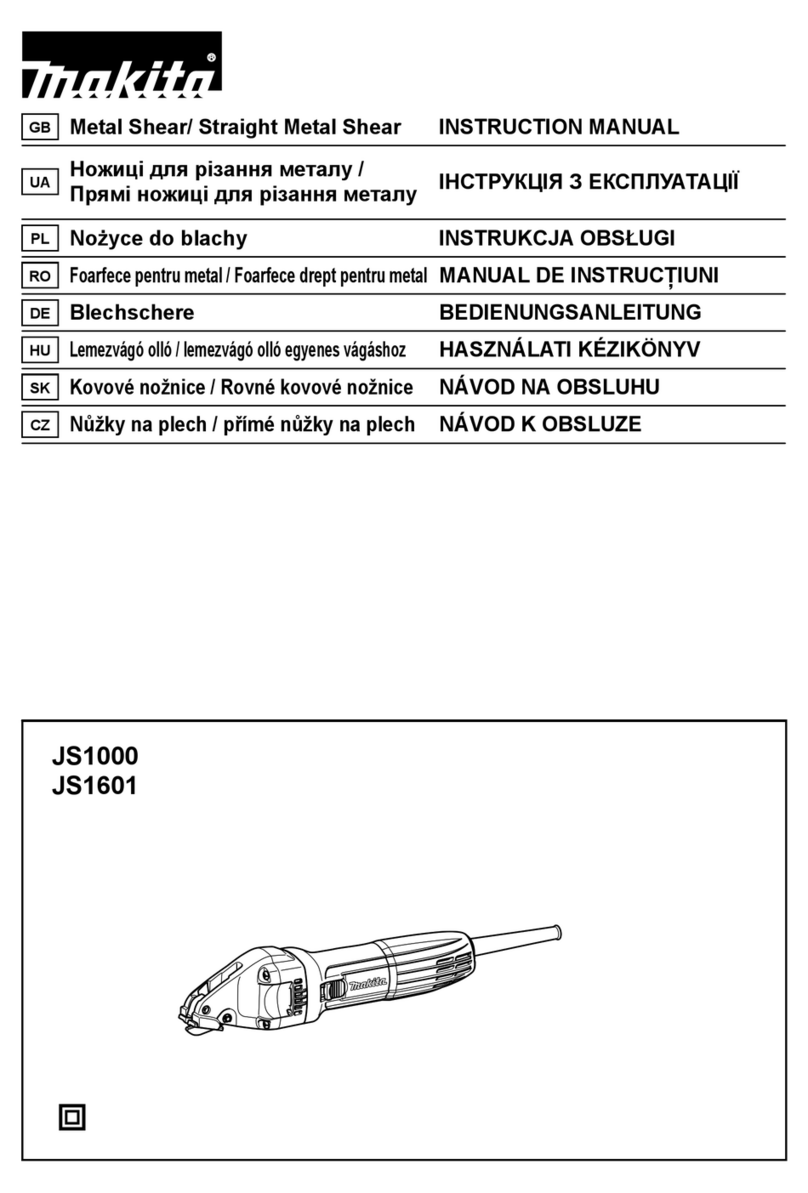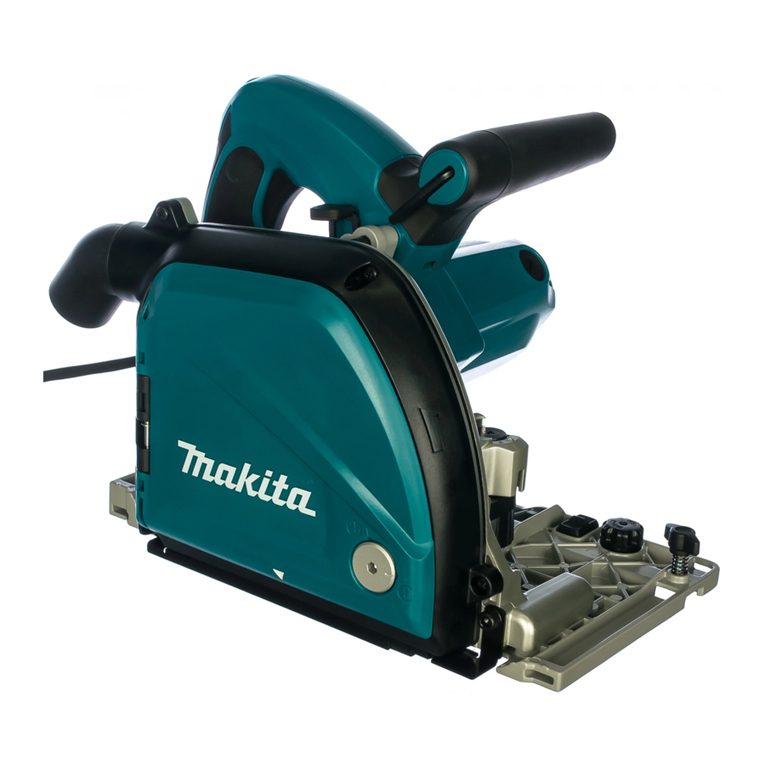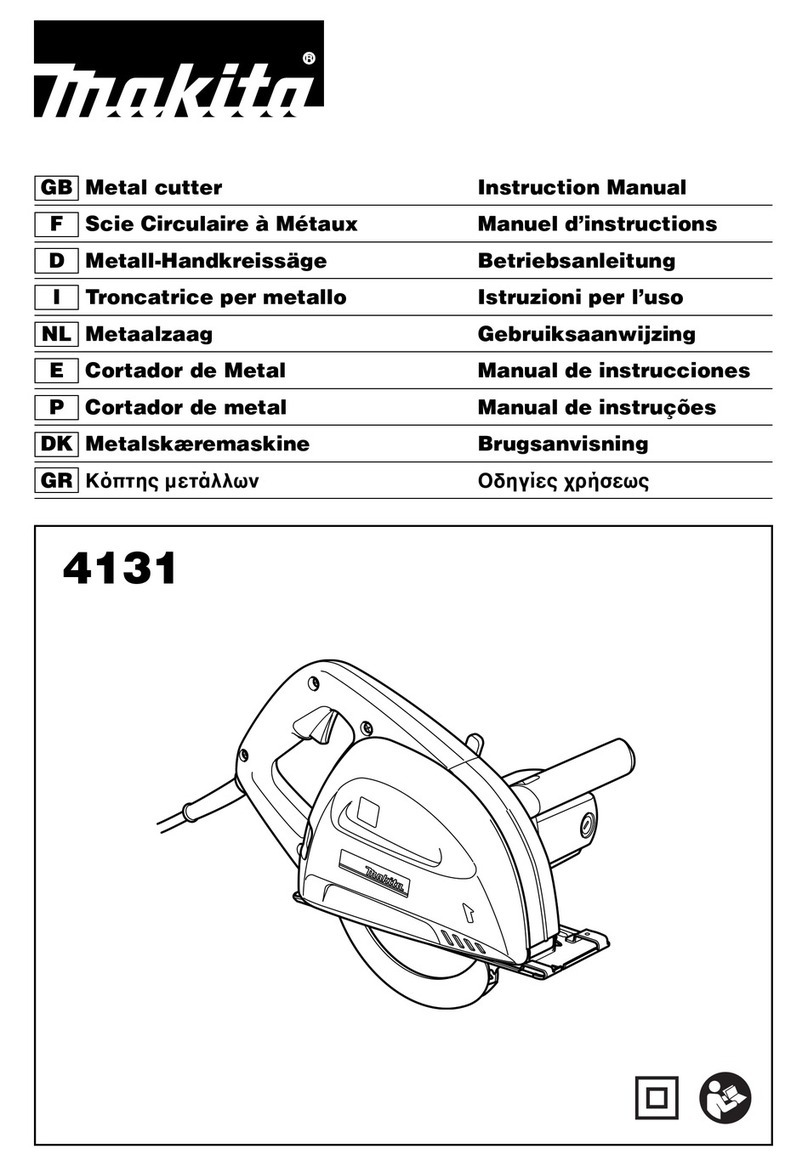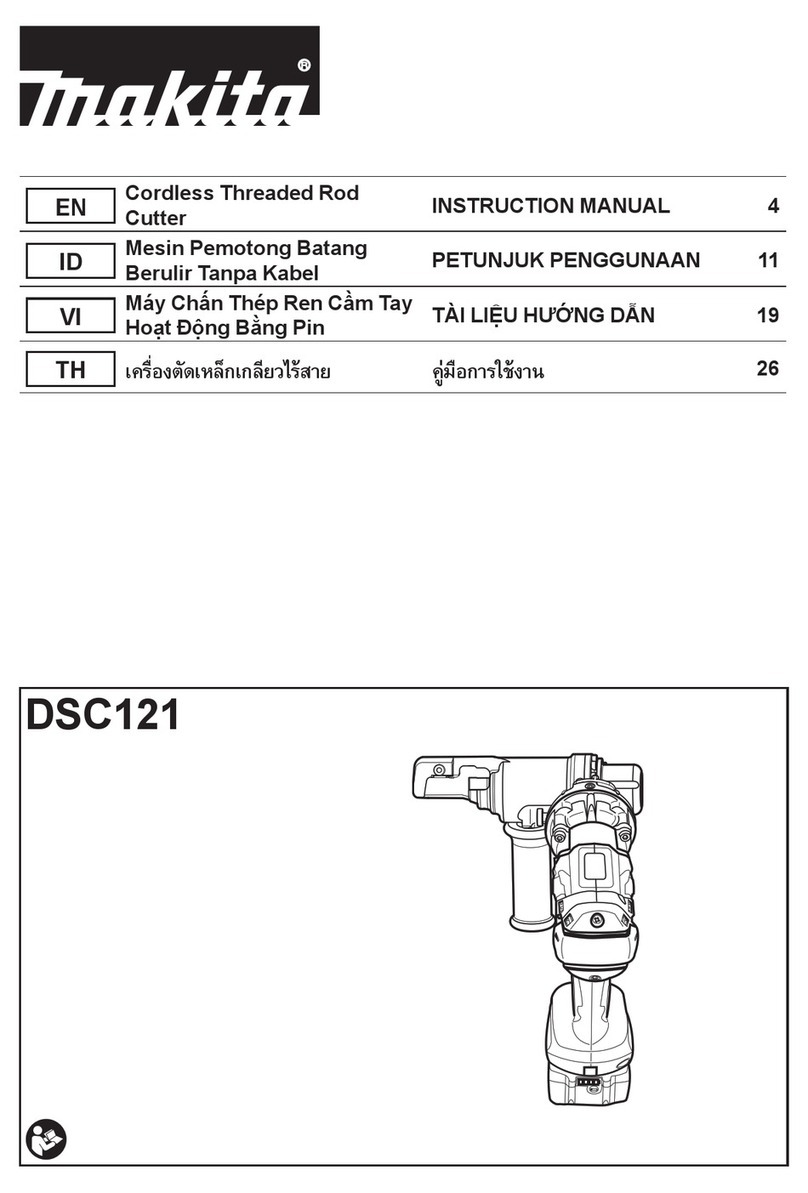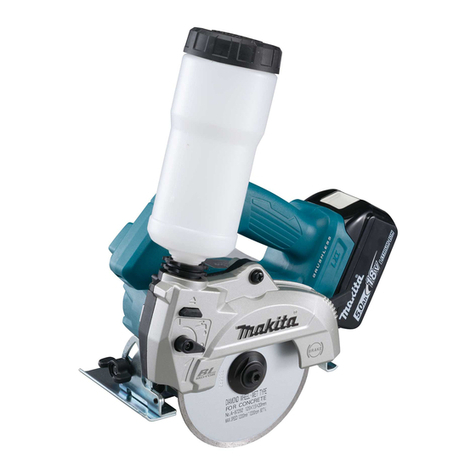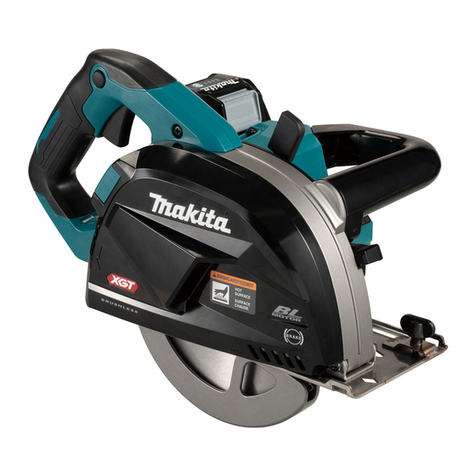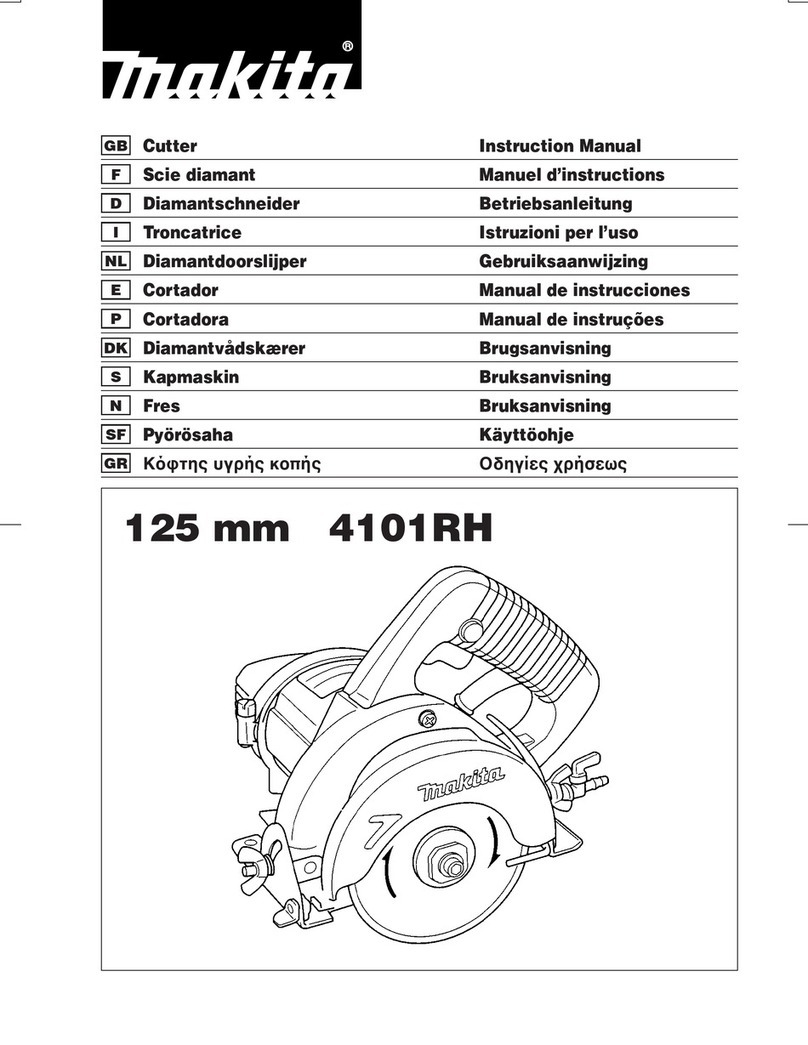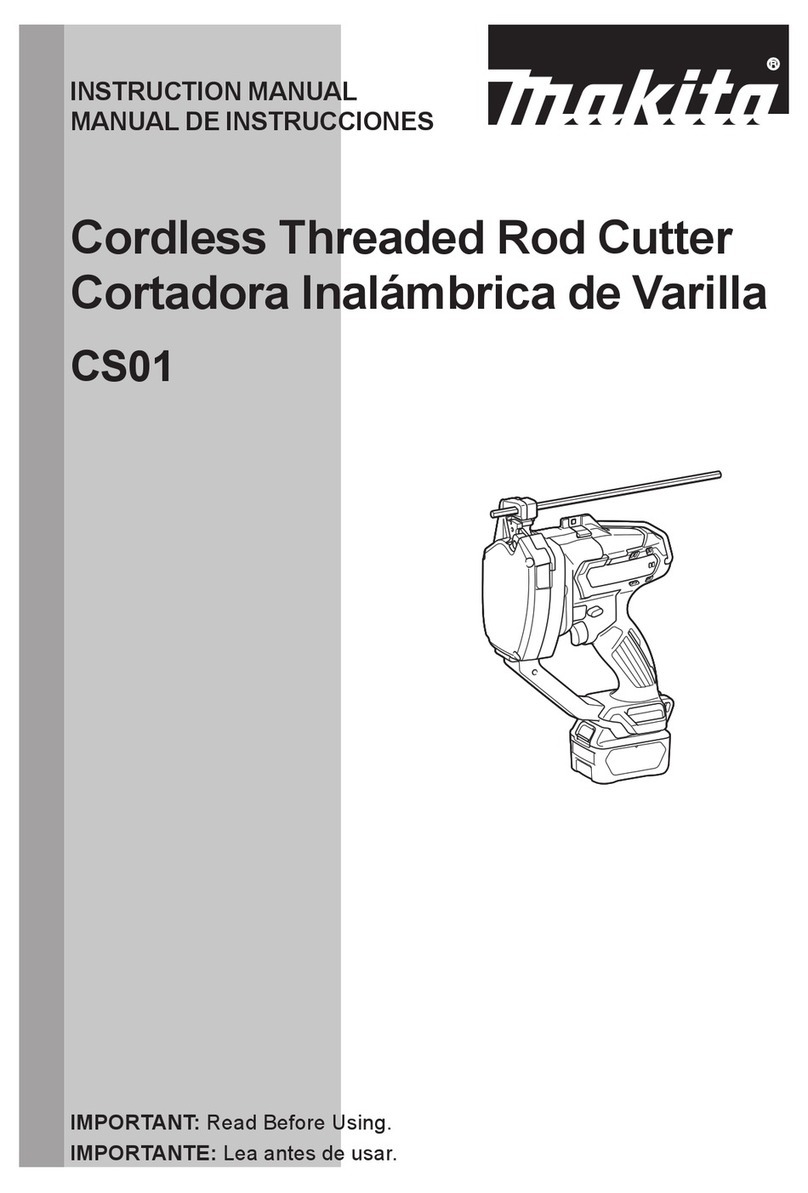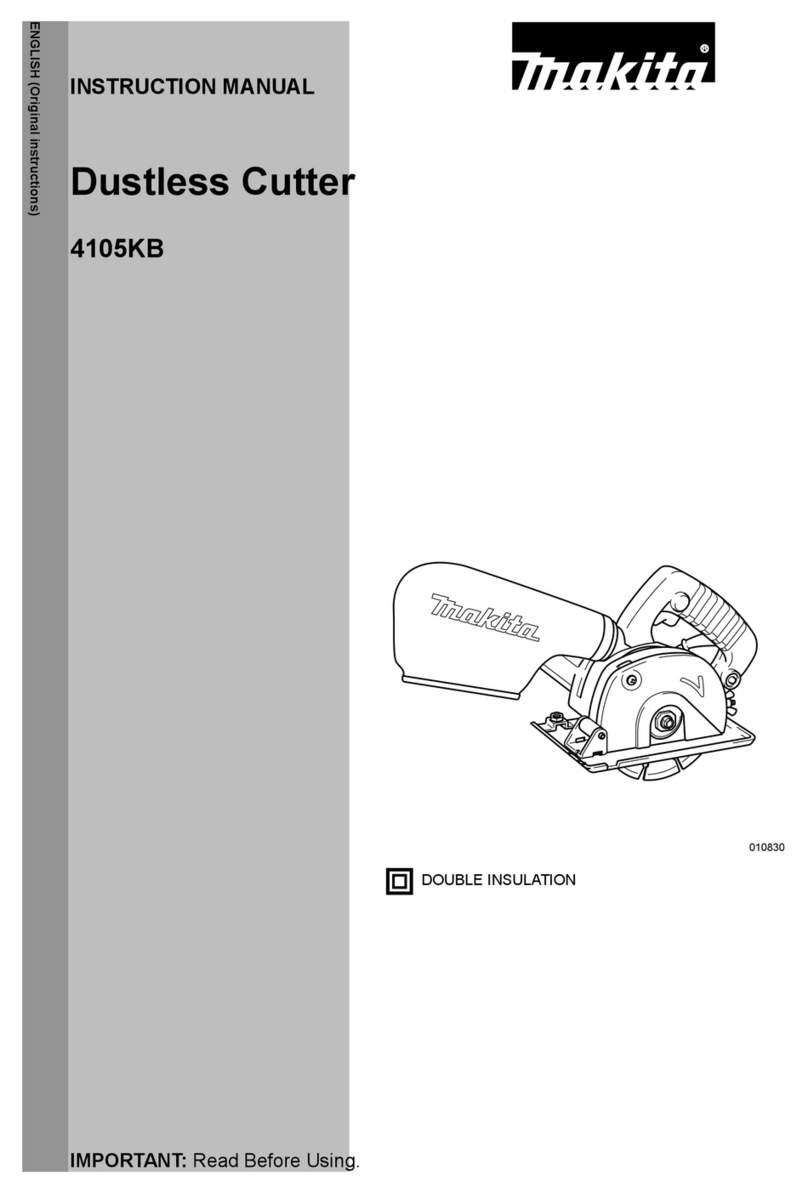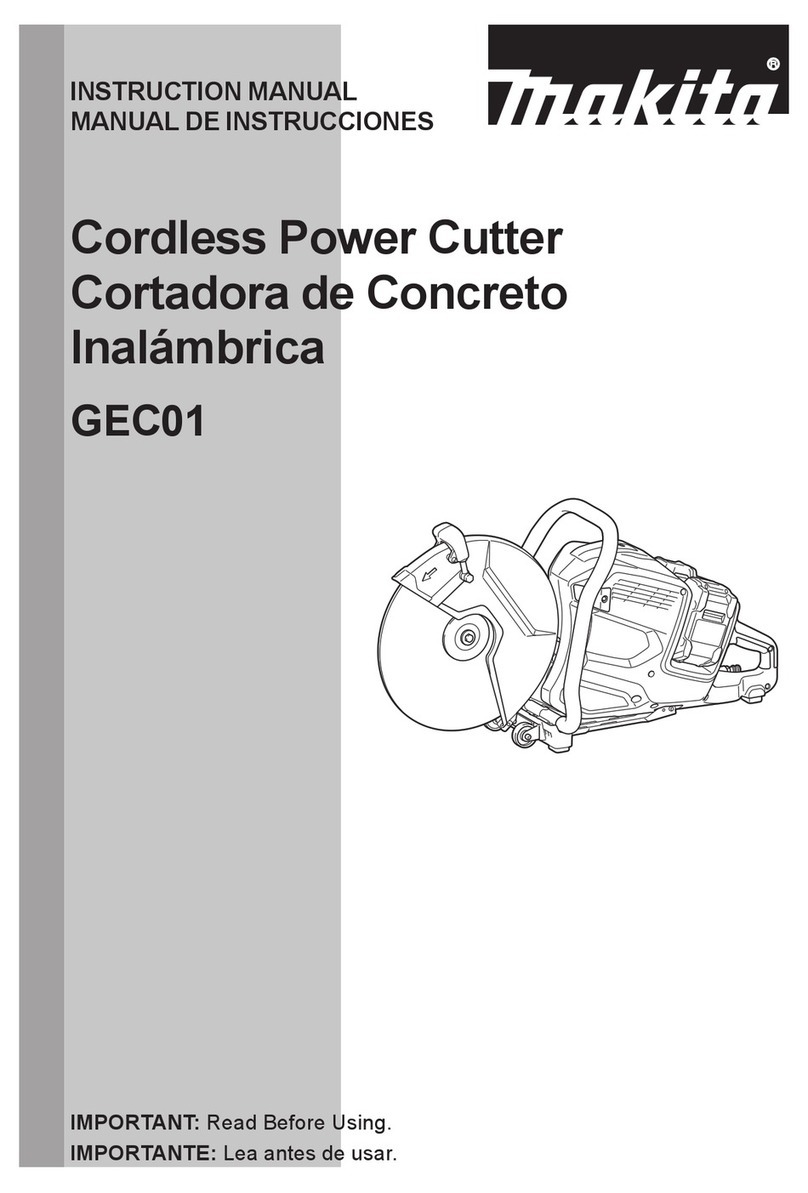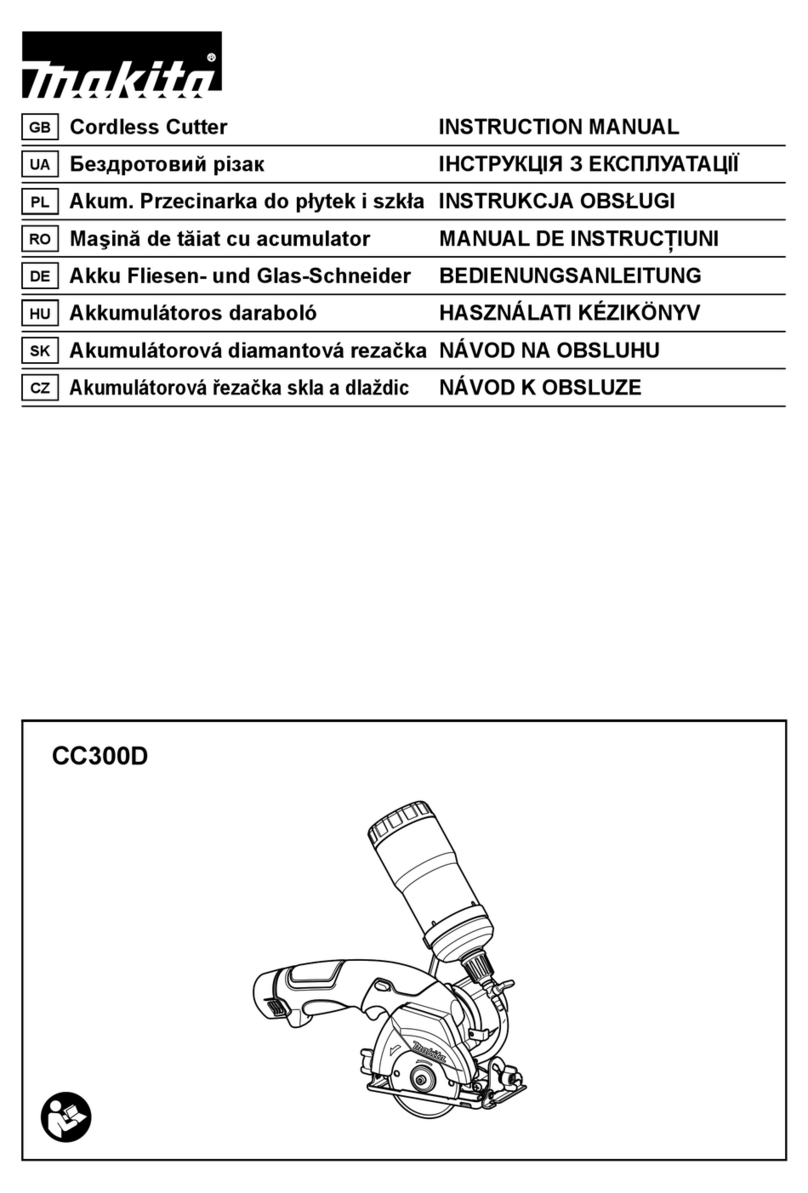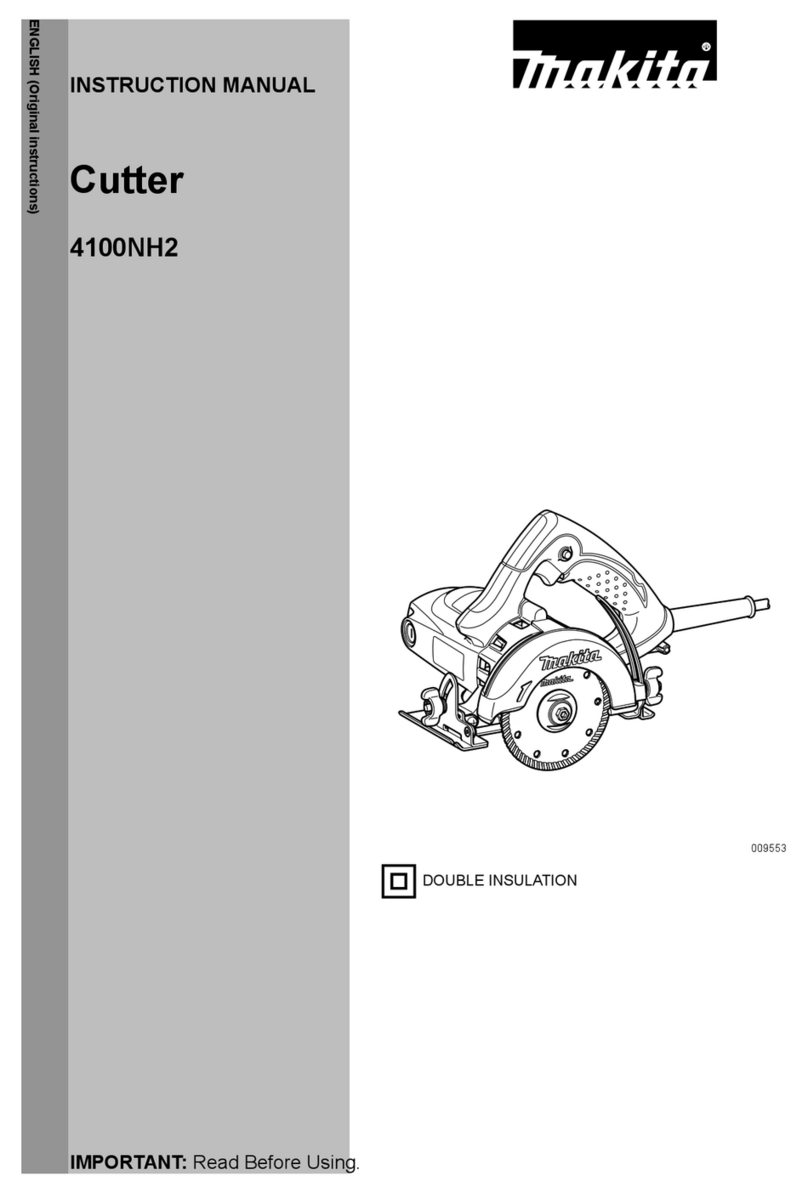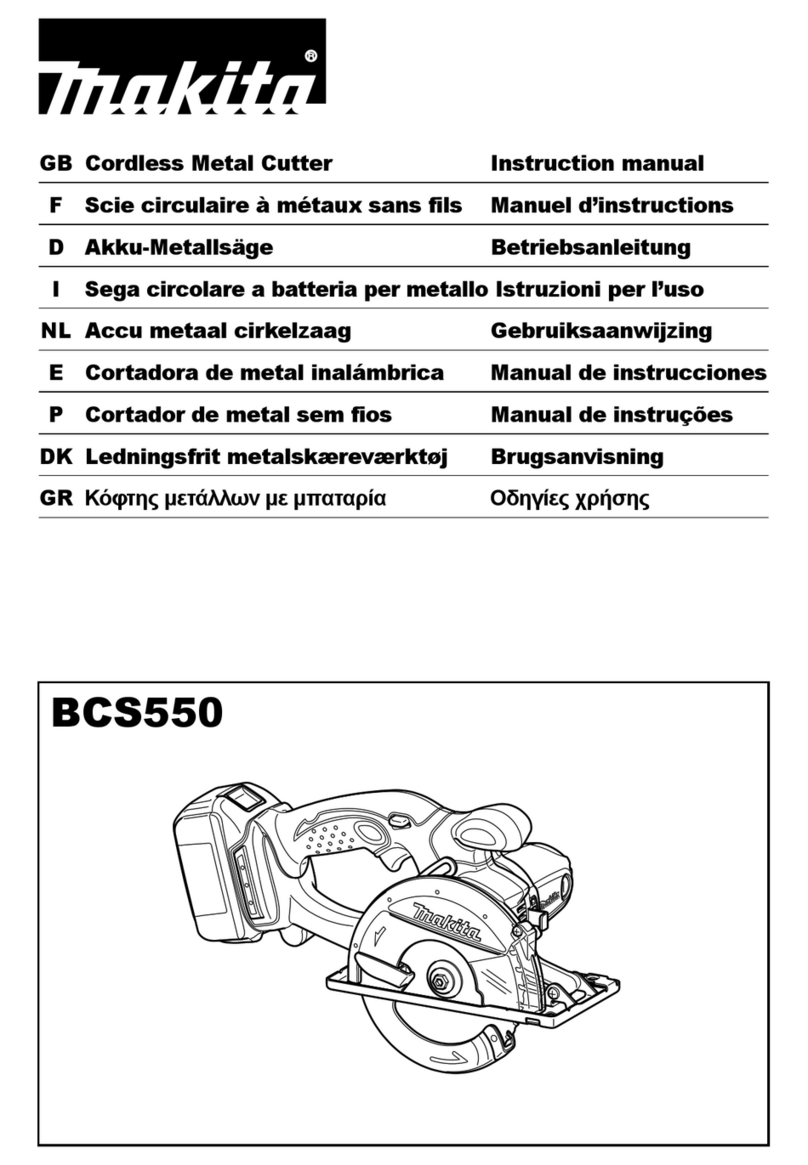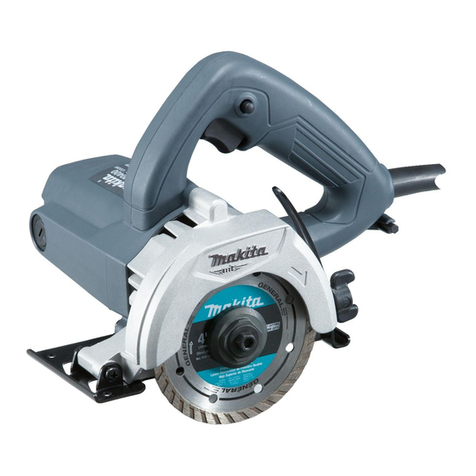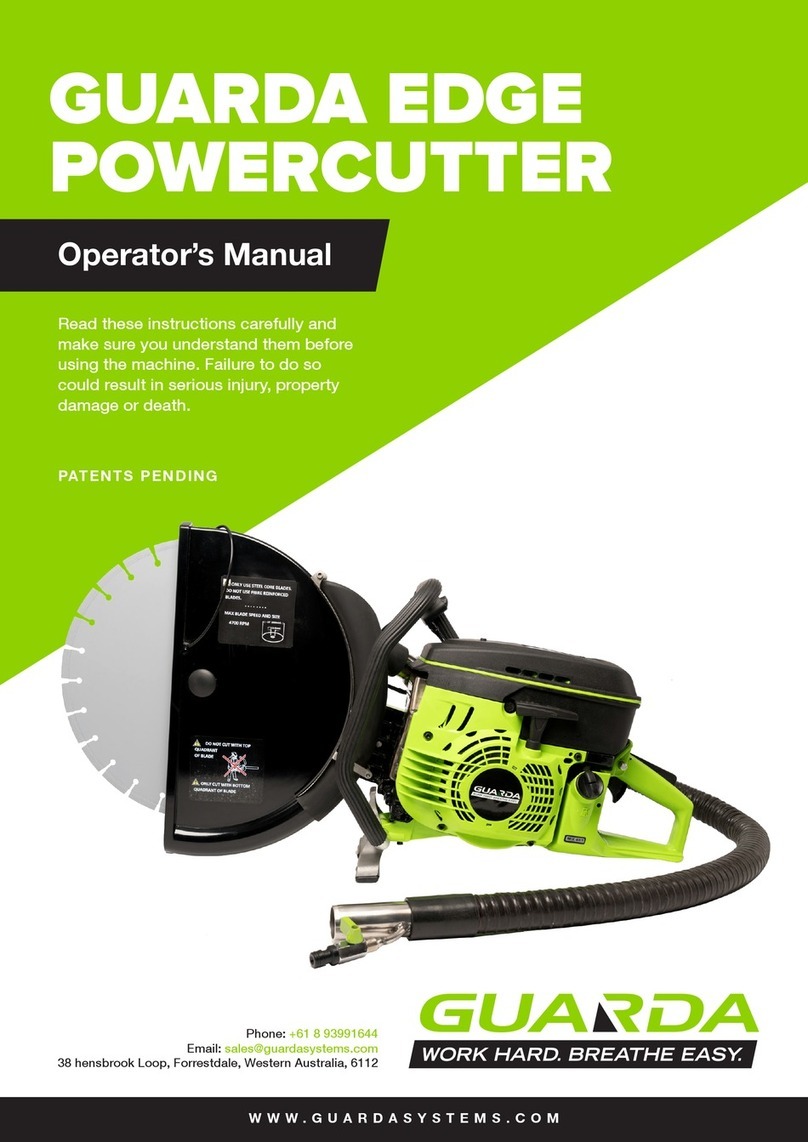
10 ENGLISH
15. Regularly clean the pow er tool’ s air vents. T h e
motors fan will draw the dust inside the housing
and ecessive accumulation of powdered metal
may cause electrical hazards.
16. Do not operate the power tool near ammable
materials. Sparks could ignite these materials.
Kickback and related w arnings
Kickback is a sudden reaction to a pinched or snagged
rotating wheel. Pinching or snagging causes rapid stalling
of the rotating wheel which in turn causes the uncon-
trolled power tool to be forced in the direction opposite of
the wheel’s rotation at the point of the binding.
For eample, if an abrasive wheel is snagged or
pinched by the workpiece, the edge of the wheel that is
entering into the pinch point can dig into the surface of
the material causing the wheel to climb out or kick out.
The wheel may either jump toward or away from the
operator, depending on direction of the wheel’s move-
ment at the point of pinching. Abrasive wheels may also
break under these conditions.
Kickback is the result of power tool misuse and/or
incorrect operating procedures or conditions and can be
avoided by taking proper precautions as given below.
1. Maintain a rm grip on the power tool and
position your body and arm to allow you to
resist kickback forces. Alw ays use auxiliary
handle, if provided, for maximum control over
kickback or torque reaction during start-up.
The operator can control torue reactions or kick-
back forces, if proper precautions are taken.
2. Never place your hand near the rotating acces-
sory. Accessory may kickback over your hand.
3. Do not position your body in line w ith the
rotating w heel. Kickback will propel the tool in
direction opposite to the wheel’s movement at the
point of snagging.
. Use special care w hen w orking corners, sharp
edges etc. Avoid bouncing and snagging the
accessory. Corners, sharp edges or bouncing
have a tendency to snag the rotating accessory
and cause loss of control or kickback.
5. Do not attach a saw chain, w oodcarving blade,
segmented diamond w heel w ith a peripheral
gap greater than 10 mm or toothed saw blade.
Such blades create freuent kickback and loss of
control.
6. Do not “ jam” the w heel or apply excessive
pressure. Do not attempt to make an excessive
depth of cut. Overstressing the wheel increases
the loading and susceptibility to twisting or binding
of the wheel in the cut and the possibility of kick-
back or wheel breakage.
7 . When w heel is binding or w hen interrupting
a cut for any reason, switch o the power
tool and hold the pow er tool motionless until
the w heel comes to a complete stop. Never
attempt to remove the w heel from the cut w hile
the w heel is in motion otherw ise kickback may
occur. Investigate and take corrective action to
eliminate the cause of wheel binding.
8. Do not restart the cutting operation in the
w orkpiece. Let the w heel reach full speed and
carefully re-enter the cut. The wheel may bind,
walk up or kickback if the power tool is restarted in
the workpiece.
9. Support panels or any oversized w orkpiece to
minimize the risk of w heel pinching and kick-
back. Large workpieces tend to sag under their
own weight. Supports must be placed under the
workpiece near the line of cut and near the edge
of the workpiece on both sides of the wheel.
10. Use extra caution w hen making a “ pocket cut”
into existing w alls or other blind areas. T h e
protruding wheel may cut gas or water pipes, elec-
trical wiring or objects that can cause kickback.
11. Before using a segmented diamond w heel,
make sure that the diamond w heel has the
peripheral gap betw een segments of 10 mm or
less, only w ith a negative rake angle.
Additional Safety Warnings:
1. Never attempt to cut w ith the tool held upside
dow n in a vise. This can lead to serious acci-
dents, because it is etremely dangerous.
2. Check that the w orkpiece is properly
supported.
3. Some material contains chemicals w hich may
be toxic. Take caution to prevent dust inhala-
tion and skin contact. Follow material supplier
safety data.
. Store w heels as per manufacturer recom-
mendations. Improper storage may damage the
wheels.
SAVE THESE INSTRUCTIONS.
WARNING: DO NOT let comfort or familiarity
w ith product (gained from repeated use) replace
strict adherence to safety rules for the subject
product. MISUSE or failure to follow the safety
rules stated in this instruction manual may cause
serious personal injury.
Important safety instructions for
battery cartridge
1. Before using battery cartridge, read all instruc-
tions and cautionary markings on (1) battery
charger, (2) battery, and (3) product using
battery.
2. Do not disassemble or tamper w ith the battery
cartridge. It may result in a re, ecessive heat,
or eplosion.
3. If operating time has become excessively
shorter, stop operating immediately. It may
result in a risk of overheating, possible burns
and even an explosion.
. If electrolyte gets into your eyes, rinse them
out w ith clear w ater and seek medical atten-
tion right aw ay. It may result in loss of your
eyesight.
5. Do not short the battery cartridge:
( 1) Do not touch the terminals w ith any con-
ductive material.
( 2) Avoid storing battery cartridge in a con-
tainer w ith other metal objects such as
nails, coins, etc.
( 3) Do not expose battery cartridge to w ater
or rain.


